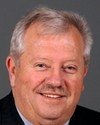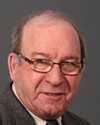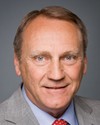The economy has been a bit down over the last year. We saw close to 100,000 passenger segments in 2007 drop to around 97,000 passenger segments in 2008. Our cargo is an integral part of our airline. We have two elements to our airline: one is the jet service; the other is turboprop service to the northern communities.
Our service to the north relies heavily on a combination of cargo and passengers. This allows us to fly larger aircraft, so that the rates that we charge into these northern communities are probably one-half of what you would get with turboprop service in other northern territories. It is probably the same turboprop rate as you would get with Air Canada Jazz or others in the south. We charge a significantly lower rate, but we rely on cargo. So if you have 30 people on the aircraft, you also have one-half of the aircraft full of cargo. On a weight-by-weight basis, it's about the same to fly people as to fly cargo—you just don't have to feed it.
From the south, we also rely on cargo. We do what we call, for our stats, our cargo-adjusted load factors. We may fly our aircraft with fewer people, but we provide all the air-bound cargo of all couriers and others into the Yukon. For the mining companies, we provide key cargo out of Dawson and other towns.
We also do quite a bit of charter work, including flying people out of Vancouver to the Queen Charlotte Islands. We fly people home from the oil sands, and we also fly people from the south into Churchill and other areas for polar bear viewing. We've tried hard to stay diversified and run an effective charter program. I would say charter is about 8% to 10% of our business.
Passenger service is the largest amount of our business, but cargo is a key part. That's what makes our planes profitable, even though we may be facing some fairly serious competition in getting people into the seats.





